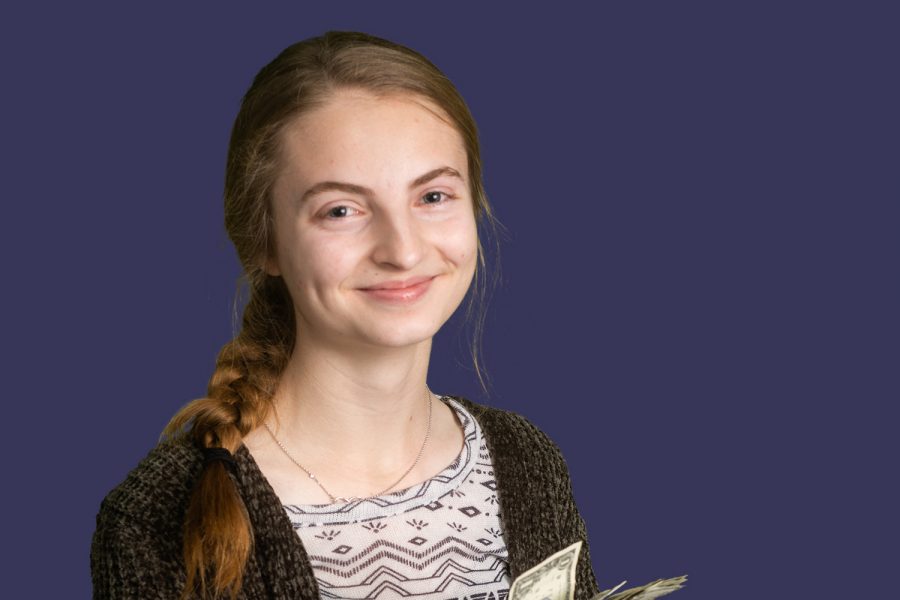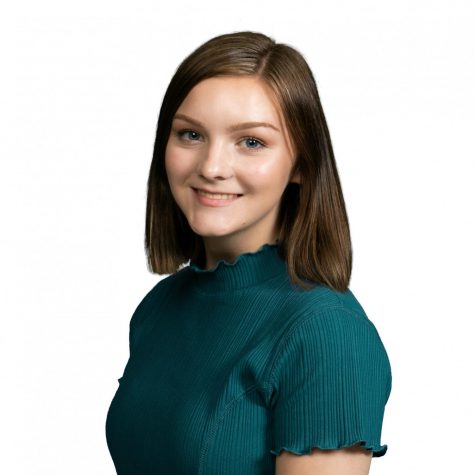Moving along
Senior accepted to Ivy Leagues and more
Photo by Margaret Debenport
Senior Autumn Parrott celebrates being accepted into multiple Ivy League colleges.
May 12, 2020
She sat in a spotless room, one she had unrelentlessly cleaned as the clock inched toward decision time. In the background, Australian band 5 Seconds of Summer’s live album kept time with her beating heart, her family sitting outside, with news that could change her life only a few clicks away.
The clock struck 7 p.m. Eastern Standard Time, 6 p.m. Central Standard Time, and she already had the admissions portals open. It was Ivy Day, and senior Autumn Parrott sat ready with the computer screen in front of her.
“I opened the first one up, took a breath and then went to the next one, and I was like, OK, don’t get too excited,” Parrott said. “I was trying to hold it in, but, by the time I got to the last one, I was yelling and ran to tell my family and all my friends.”
Parrott logged onto admission portals to Duke, Dartmouth, Yale and Harvard to see the same message across each screen: one welcoming her to their university.
After applying to 17 colleges, which also included MIT, Johns Hopkins, Purdue, Vanderbilt, Washington University, Georgia Tech, Notre Dame, Northwestern, Rice, Stanford and being accepted into all but MIT, Parrott’s joyful celebration was shared with her family.
“I ran out of my bedroom, and I swung open the door to my backyard, and I started screaming and jumping up and down. My parents looked at me like I was crazy while I shouted I had gotten in. They were really happy, because they hadn’t all gone to college,” Parrott said. “They hadn’t heard of some of the colleges I’d gotten into before, but seeing their reaction this time to schools like Yale and Harvard was more exciting. They were jumping up and down because they knew what that meant for me.”
After many minutes of phone calls and a celebration on the back porch with her family, Parrott extended her excitement with a celebratory drive with her sister. Upon their return, Autumn was so giddy with joy that she spread the news beyond her inner circle.
“I was like, I’m gonna tell the neighbor, and Angie (Autumn’s sister) was like, ‘You never even talk to him that much,’ but I was like, ‘I’m gonna tell him’,” Parrot said. “I walked up in the driveway and I was like, hey, I got into Harvard,” and he was like, ‘I think I heard from your backyard.’”
The excitement of acceptance didn’t happen without many hours of applying. Working on applications to one college alone is a hefty task for any advanced high school senior, let alone applying to 17. However, the original list of possible futures for Parrott was far more complicated.
“I made a ginormous list, and it had all of the statistics and categories for each school like how many undergraduates were in the program, did they have an undergraduate focus, what was their acceptance rate, what was their rating for the major that I wanted, and did they have research centered around biomedical engineering,” Parrott said. “It had everything in it, I probably put 100 colleges on it.”
Parrott has set big goals for herself since a young age, always looking to do good in school and life. Her senior year has been no exception.
“I’ve had a goal to get into a good college, not necessarily an Ivy League college, but one that would have resources and opportunities for me to have a good career and to further my education for a long time,” Parrott said.
Being accepted into the highest rated biomedical engineering programs wasn’t accomplished without hard work throughout all of Parrott’s schooling. Outside of school, Parrott dedicated hours to educating herself on topics she felt interesting which led to a breakthrough that would inspire further exploration.
“I read this article about 3D printed organs, and how big of a problem it is that people die on the waiting list for an organ transplant,” Parrott said. “When I read this article, I was like, this is the future. This is how we’re going to help people.”
Her decision to major in biomedical engineering came after she took a leap of faith and became part of research first hand.
“I went on a STEM trip with our Choctaw camp, and we toured the University of Oklahoma. There was a researcher there who was a PhD student, and he had done biomedical engineering projects, and I went home and I read articles he had written, and I really liked them, so I emailed him,” Parrott said. “After we had talked back and forth for a while, I went to the lab and I shadowed him for a couple of weeks.”
It was during this time in shadowing that Parrott discovered what lay at the center of biomedical engineering, and ultimately why she felt so called to it.
“I’ll be helping people all the time,” Parrot said. “That’s what I’m wanting to do.”















